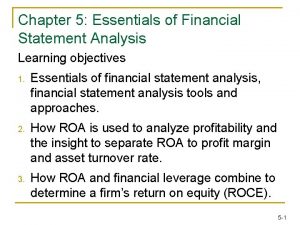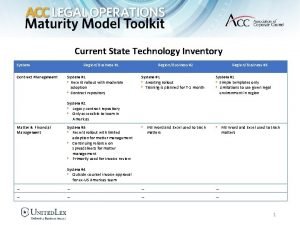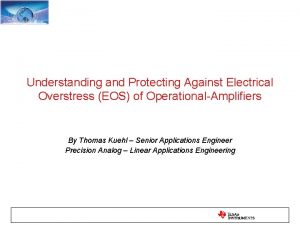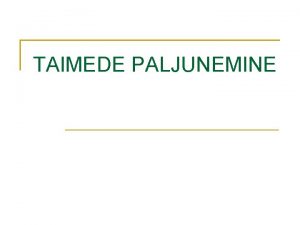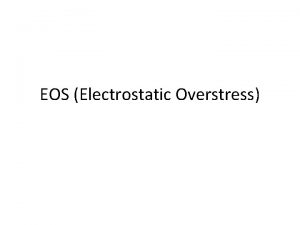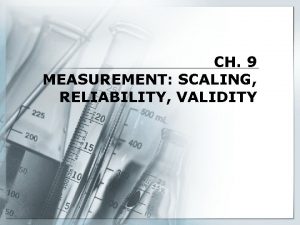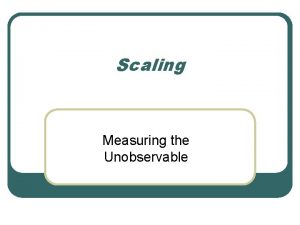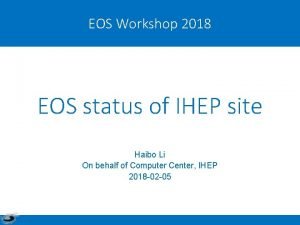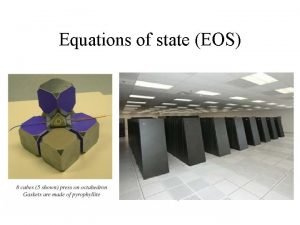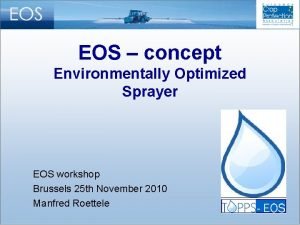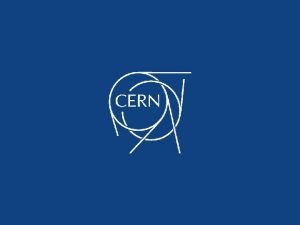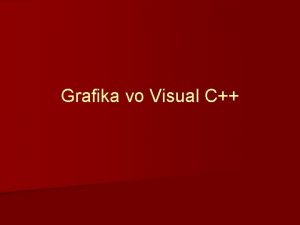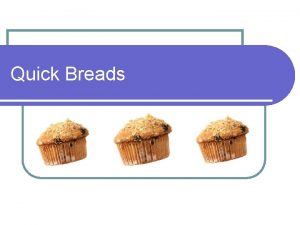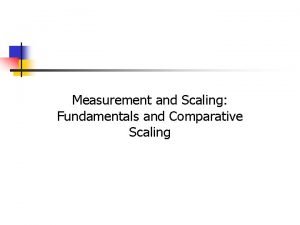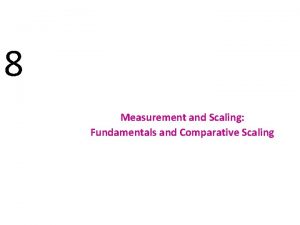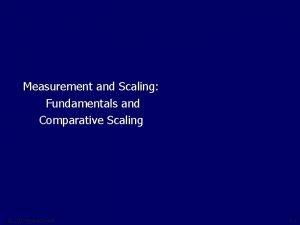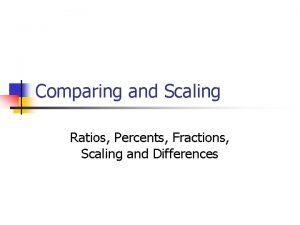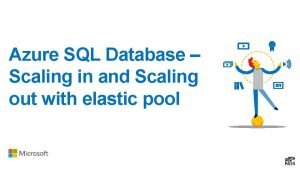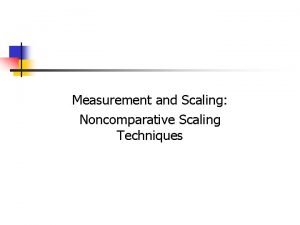Scaling the EOS namespace Quick overview and current
























- Slides: 24


Scaling the EOS namespace Quick overview, and current status Georgios Bitzes, Elvin Sindrilaru, Andreas J. Peters, Andrea Manzi (speaker) CERN 10 -Jul-2018 CHEP 2018 2

EOS Architecture • File Storage Nodes (FST): Management of physical disks, file serving • Metadata Servers (MGM): Namespace + client redirection to FSTs • Message Queue (MQ): Intercluster communication, heartbeats, configuration changes 10 -Jul-2018 CHEP 2018 3

The namespace subsystem EOS presents one single namespace to files it manages • § … even though they are typically spread across hundreds of disk servers and thousands of physical disks Handles file permissions, metadata, quota accounting, mapping between logical filenames and physical locations • § -rw-rw-r-- 1 user group 21 Jul 10 -Jul-2018 2 10: 02 dir 1/filename CHEP 2018 4

In-memory namespace implementation • The MGM held the entire namespace inmemory. Each file / directory entry allocates up to 1 kb as a C++ structure in memory. • Linear on-disk changelogs to track all namespace changes § § • file additions, metadata changes, physical location migrations … One for files, one for directories The in-memory contents are reconstructed on reboot by replaying the changelogs 10 -Jul-2018 CHEP 2018 5

In-memory namespace implementation (2) • Need for a new namespace implementation § Long boot time, proportional to the number of files on an instance. For large namespaces can exceed 1 hour § Requires a lot of RAM 10 -Jul-2018 CHEP 2018 6

The need for high-availability • EOS has become critical for data at CERN. MGM loss means long downtime, great disruption. • Ideally: Transparent failover, no service interruption § No single point of failure § 10 -Jul-2018 CHEP 2018 7

Architectural evolution • We’ve designed and implemented Quark. DB, a highly available datastore for the namespace. § § § • Redis protocol, supports a small subset of Redis commands. Rocks. DB as the underlying storage backend. High availability: Raft consensus algorithm. Implement the minimum necessary, and keep the system simple § Quark. DB runs as a plug-in to the XRoot. D server framework used by EOS 10 -Jul-2018 CHEP 2018 8

Architectural evolution(2) 10 -Jul-2018 CHEP 2018 9

Raft consensus algorithm – simplified Replication One of the nodes is elected to become the master (or leader) Node 1 Change metadata of /eos/dir/file Node 2 Client says: Change metadata of /eos/dir/file ok Leader 10 -Jul-2018 Node 3 CHEP 2018 10

Raft consensus algorithm – simplified Leader election (1) Haven’t heard from the leader for 2 sec… Something is wrong Follower 10 -Jul-2018 CHEP 2018 11

Raft consensus algorithm – simplified Leader election (2) A successful election: 2 out of 3 nodes agree on the new leader Vote for me for term 20 Follower Candidate Vote granted Used to be leader for term 19 10 -Jul-2018 CHEP 2018 12

Raft consensus algorithm – simplified Log replication Hey, are you there? Leader Follower Yeah, my last index is #149 You’re missing entries 150 to 203. . Here they are… 10 -Jul-2018 CHEP 2018 13

Quark. DB Testing • Quark. DB is being tested extensively. Unit, stress, chaos tests: From testing parsing utility functions, to simulating constant leader crashes and ensuring nodes stay in sync. § Test coverage: 91%, measured on each commit. § § All tests running under Address. Sanitizer & Thread. Sanitizer, on each commit. 10 -Jul-2018 CHEP 2018 14

Problem: Network latency • Previous assumption throughout the MGM code: Access latency to the NS is minimal, all lives in-memory. • But with QDB, metadata lives a network roundtrip away… § • Caching frequently accessed entries in the MGM helps a lot. Certain locks which were fine to hold for inmemory NS operations, were causing trouble for new NS. 10 -Jul-2018 CHEP 2018 15

Problem: Network latency (2) • Using prefetching to first load metadata into the MGM cache, before holding any locks. § Allows staging in-flight requests from many clients simultaneously. § Allows pipelining, virtually eliminating effects of network latency for many operations (notably “ls”) 10 -Jul-2018 CHEP 2018 16

Current status • EOSPPS: our pre-production instance runs NS on Quark. DB since 7 months • • 4. 6 billion files reached– larger namespace than all other instances combined Boot time: A couple of minutes 10 -Jul-2018 CHEP 2018 17

Current status (2) • Some more numbers: Namespace size on disk: ~0. 6 TB § Quark. DB has been able to sustain 7 -11 k. Hz of writes for weeks, translates to around ~1 k. Hz file creations. § § First production instance under deployment for the EOS HOME project 10 -Jul-2018 CHEP 2018 18

Next Steps • Implementing HA at the MGM level. Multiple standby MGMs, coordination through Quark. DB on who becomes active 10 -Jul-2018 CHEP 2018 19

Thanks https: //gitlab. cern. ch/eos/quarkdb • Current status: ~18 k lines of code • § § • including tests, tools excluding dependencies More on Raft: § § https: //raft. github. io/raft. pdf https: //thesecretlivesofdata. com/raft/ Questions, comments? 10 -Jul-2018 CHEP 2018 20

Backup Slides 10 -Jul-2018 CHEP 2018 21

Possible alternatives • RDBMs: scalability issues, complicates our setup • Redis: scalable and fast, but… § § • high per-entry RAM overhead redis cluster can lose acknowledged writes Cassandra: scales very well, but… § § adds significant complexity to setup & operation performance / resource cost is high 10 -Jul-2018 CHEP 2018 22

Redis command translation Redis command rocksdb Key descriptor: “dmyhash” => “This key is a hash, current size is 5” HSET myhash field contents “bmyhash##field” => “contents” Key descriptor: “dmyset” => “This key is a set, current size is 8” SADD myset element “cmyset##element” => “ 1” 10 -Jul-2018 CHEP 2018 23

Consistency guarantees • Quark. DB is a strongly consistent datastore (CP from CAP theorem) • Linearizability: once a client receives an ACK to a write, all future reads (from any client) are guaranteed to return that value, or a future one. • even if the leader crashes right after the ACK 10 -Jul-2018 CHEP 2018 24
 Quick find algorithm
Quick find algorithm The fan blade is speeding up. what are the signs of
The fan blade is speeding up. what are the signs of Current ratio and quick ratio
Current ratio and quick ratio Overview of the current state of technology
Overview of the current state of technology Line currents
Line currents Phase to phase voltage
Phase to phase voltage Semiconductor
Semiconductor Ac systems lesson 4
Ac systems lesson 4 Drift current and diffusion current
Drift current and diffusion current Drift current and diffusion current in semiconductor
Drift current and diffusion current in semiconductor Line current and phase current
Line current and phase current Slideplayer
Slideplayer Diffusion current density
Diffusion current density Eos rejuvenation
Eos rejuvenation Q point
Q point Why is sma welding current referred to as constant current?
Why is sma welding current referred to as constant current? Hazard based safety engineering
Hazard based safety engineering Kcl mesh analysis
Kcl mesh analysis Maxym polyakov eos
Maxym polyakov eos Alyana mcv
Alyana mcv Eos protection
Eos protection Taimede suguta paljunemise eos
Taimede suguta paljunemise eos Eos vs esd
Eos vs esd Opiekunka małżeństw utożsamiana z grecką herą rzym
Opiekunka małżeństw utożsamiana z grecką herą rzym Windows server 2003 eos
Windows server 2003 eos


